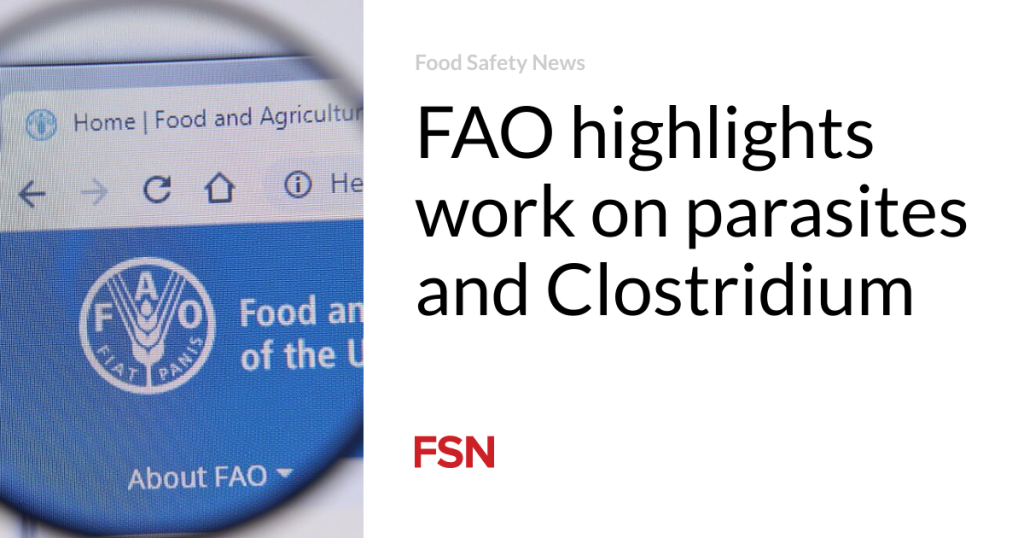The UN Food and Agriculture Organization (FAO) has issued a call for data and experts relating to parasites in food.
Approximately 30 percent of foodborne illnesses globally are caused by parasitic infections, according to FAO.
The agency is working to update scientific advice on the detection, prevention, inactivation, and other methods of control of foodborne parasitic hazards that present a public health risk.
To do this, FAO has arranged a series of expert consultations. The first meeting on protozoal foodborne parasites is scheduled for May 26 to 30. The second meeting will address cestodes, nematodes, and trematodes and is planned for the fourth quarter of 2025.
The purpose is to review and discuss data and background documents, and to assess the situation on foodborne parasites control in foods. Updated information will provide risk management options in a number of different regions and a variety of products.
Interested applicants should submit their curriculum vitae (CV) to the FAO Secretariat at Kang.zhou@fao.org. The review of candidates will begin March 15 at the latest and continue until enough experts are identified. More details can be found here
The data call aims to obtain more globally representative information on the occurrence, virulence, distribution, illnesses, and monitoring programs for parasites in foods. Data can be submitted to the same email address as above until March 15, 2025.
Clostridium work
FAO has also revealed the scientists that will be taking part in a meeting on Clostridium species in foods in Rome from Feb. 17 to 21.
The focus is on Clostridium botulinum, Clostridium perfringens, and Clostridium difficile. Foodborne botulism results in severe and frequently fatal symptoms. Clostridium perfringens ranks as one of the most frequent causes of foodborne illness in many countries, imposing a health and economic burden. Limited data are available on the control of Clostridium in foods, and specific strategies to inhibit its growth and toxin production in food sources remain undetermined.
FAO is undertaking work to collect recent research and surveillance findings about this group of pathogens as well as data representing the different food commodities and geographical regions associated with diseases caused by these organisms. Information will provide a range of risk management options for a variety of products.
Scientists will discuss the burden of disease caused by Clostridium attributed to food; prevalence of contamination of foods in different regions and consumption data of contaminated foodstuffs; hazard identification and characterization; and strategies for prevention and control.
Experts include Kathy Glass, recently retired from the Food Research Institute at the University of Wisconsin-Madison; and Kristin Schill, from the same institution; Declan Bolton from Teagasc; and Roger Cook from New Zealand Food Safety.
NAMS meeting
Finally, the World Health Organization (WHO) and Nanyang Technological University in Singapore are to hold an in-person workshop on New Approach Methodologies (NAMs) from June 18 to 20.
NAMs include in silico computational models, in vitro assays, omics technologies, and Adverse Outcome Pathways. These technologies offer accurate insights into exposure of chemical and biological hazards, while reducing reliance on animal testing.
NAMs have been established for alternative assessment on chemical and environmental risks but regulatory integration remains slow and their potential for use in food safety risk assessment is not clear. One aim of the event is to assess NAMs’ current status and future prospects for novel foods.
Candidates from national and international organizations, academia, and industry with experience on topics related to NAMs are encouraged to apply. A few attendees will be given the opportunity to provide an oral or poster presentation. Applications must be submitted before March 2.
(To sign up for a free subscription to Food Safety News, click here.)








